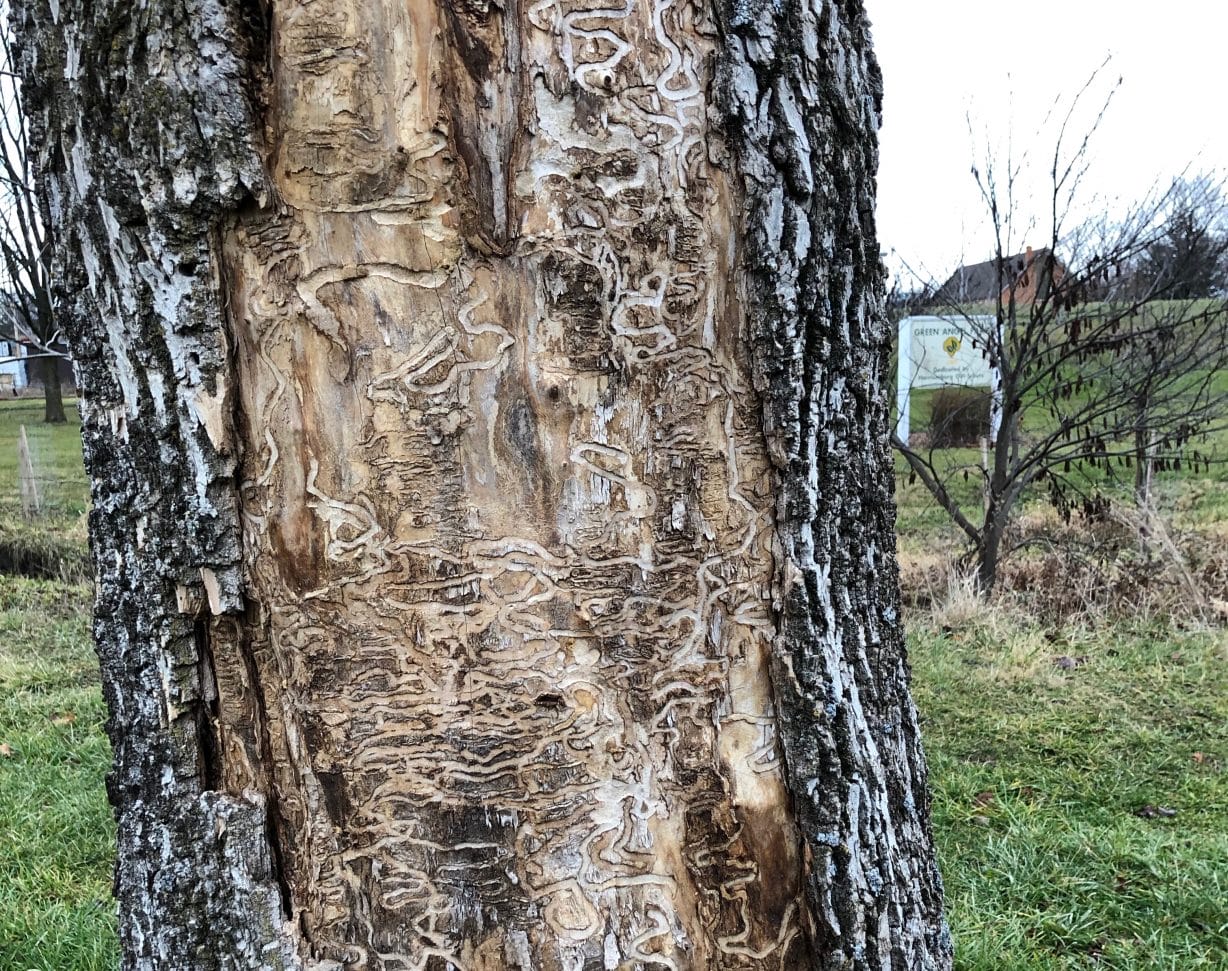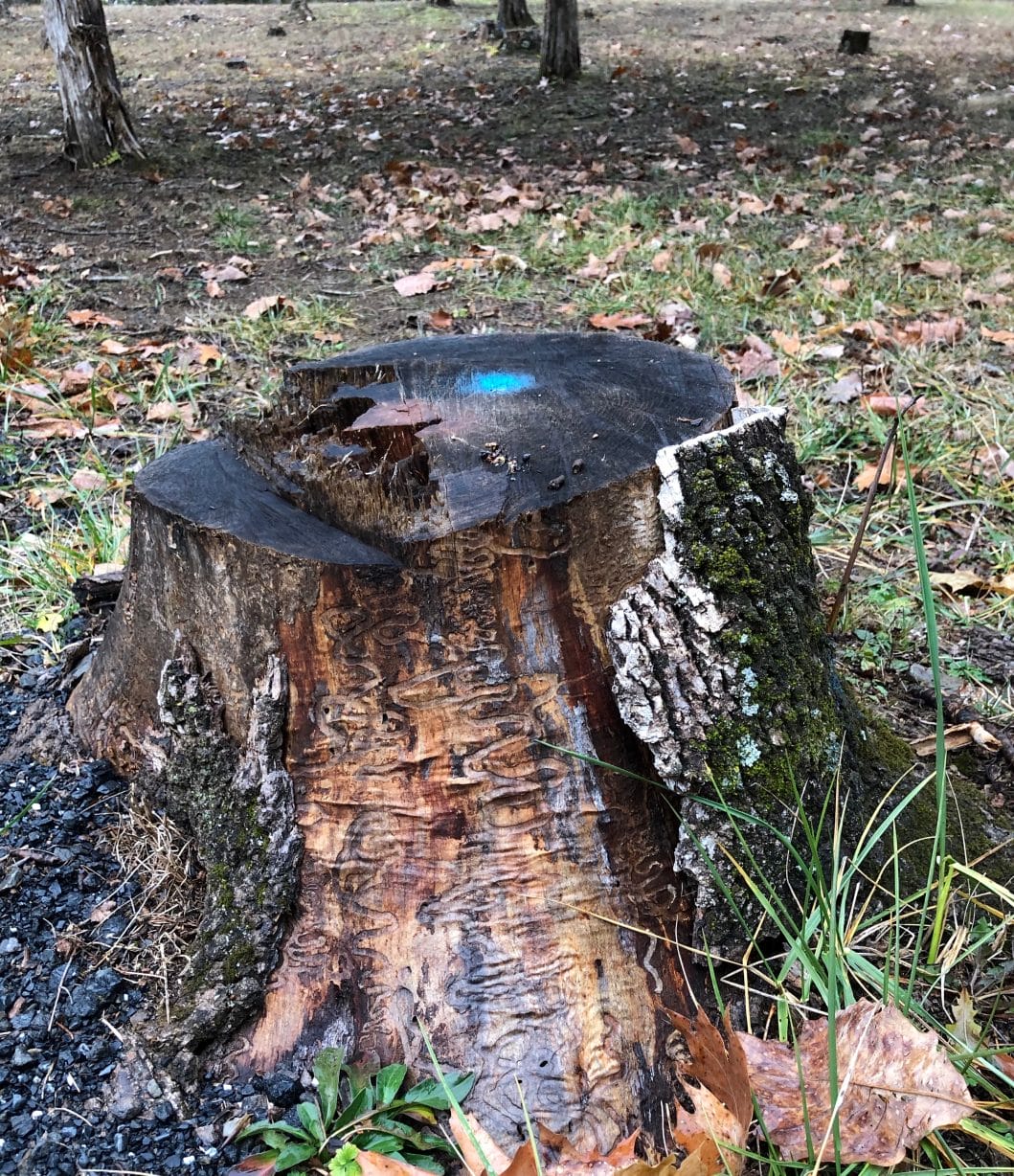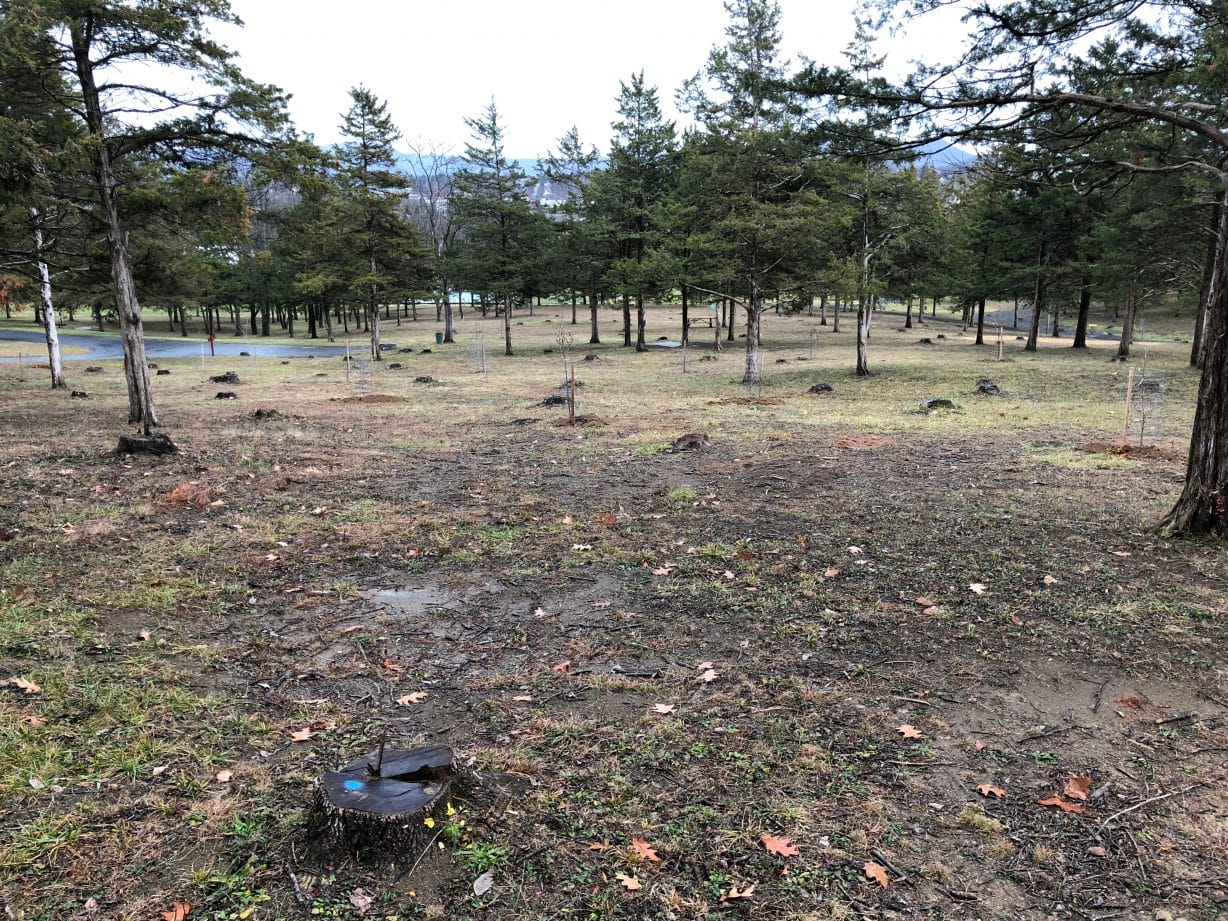
Updated 9:54 a.m. with additional comments from city officials about the cost and continuous monitoring.
By Kyle Kirby, contributor
In the last two years, Harrisonburg has cut down 350 ash trees in public areas because of the appetite of one voracious insect: the Emerald Ash Borer.
Since May 2017, this member of the jewel beetle family has wreaked havoc on ash trees across Harrisonburg. In Westover Park, city employees felled 300 trees — nearly half of the park’s trees — leaving whole stretches of stumps amid the Frisbee golf course. Another 50 came down in other public areas, including near court square. More ash trees have succumbed to the beetles on private property around Harrisonburg, although the city doesn’t keep figures for those.
The invasive species was introduced to the U.S. from Asia in the early 2000s. Meredith Bean, the Emerald Ash Borer coordinator for the Virginia Department of Forestry, said the ash borer is “so intimately co-evolved” with the ash species native to Asia, they are only a secondary pest there.
In Virginia, however, the local ash trees are unprepared for the hunger of the beetles’ larvae, and can quickly fall ill and die. All of Virginia’s native ash trees are currently on the International Union for Conservation of Nature’s list of Critically Endangered species.

The Emerald Ash Borer is most destructive when in its larval stages, which are roughly 300 days out of the year, Bean said.
“As the larvae develop, they are feeding on the xylem and phloem,” she said. That’s the conductive tissues that transport water and nutrients from the roots to the ash trees’ canopy.
“Ash trees are ‘ring porous,’ meaning they rely solely on one or two rings of xylem for all of their transpiration needs,” she said, adding it’s why they decline is so rapidly — within one to five years — after the infestation begins.
At the moment, there is no known solution to stop the Emerald Ash Borer.
In 2019, Harrisonburg spent about $20,000 to $25,000 on ash tree removals, and last June, the city paid Bartlett Tree Experts $11,526 to administer trunk injections
The city and state have cooperated on the issue. Trees that cannot be saved get cut down to prevent danger to citizens.
However, city employees administered trunk injections to 36 trees that have a chance of survival.
The treatments inject various pesticides into the tree’s trunk but can be costly — between $10 and $20 per square inch. The state government offers a 50% cost-share program for the injections.

Mike Parks, Harrisonburg Director of Communications, said about 575 tons of woodchips, or 60 logs, were created from the felled trees, with a portion of those going towards the bioreactor project at Purcell Park. The bioreactor is set to remove excess nitrogen from the park’s pond and Blacks Run. More than 150 native trees have been replanted in Westover Park, in part thanks to groups such as local Girl Scout troops.
Another 100 logs from the damaged trees were auctioned off, with some of them going to urban wood projects such as Grey Fox Design Works.
“We are treating ash trees at Westover Park and several other parks in Harrisonburg to help to protect the remaining ash trees,” said Bart McDowell, an ISA certified Master Arborist with Bartlett Tree Experts. “I think the city has been aggressive about removing infested trees.”
Parks said the city surveys the ash trees on a weekly/monthly schedule, and that any tree that poses a hazard will be considered for removal.
“Every ash tree on public property is on the watch list,” he said. “Every untreated ash tree will die within the next couple of years. We have two ISA certified tree risk assessors on staff.”
Journalism is changing, and that’s why The Citizen is here. We’re independent. We’re local. We pay our contributors, and the money you give goes directly to the reporting. No overhead. No printing costs. Just facts, stories and context. Thanks for your support.













